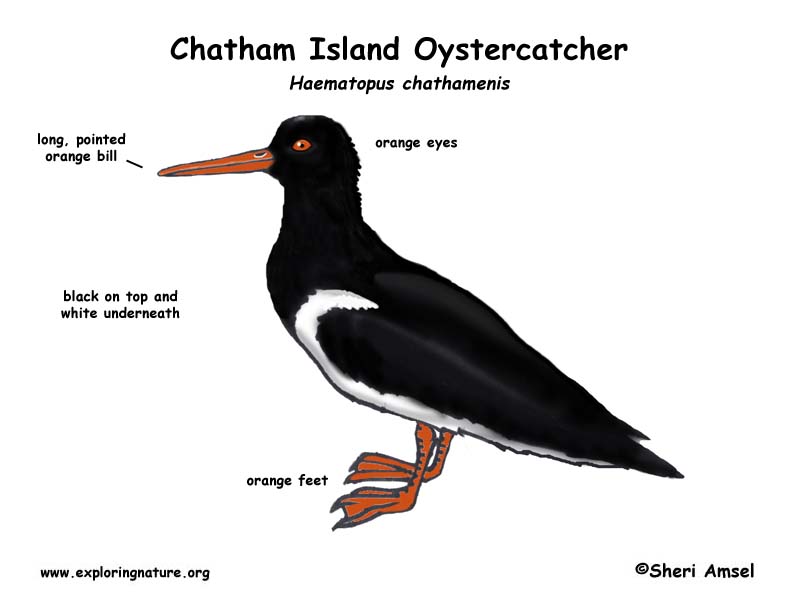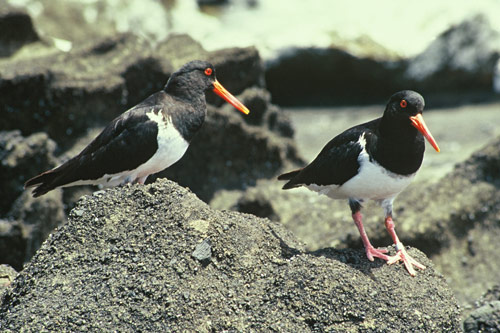Chatham Oystercatcher
Features
The Chatham Oystercatcher reached a size of 48 centimeters. Head, neck, and upper breast are black top. The underside is white with a faded border to the lower chest. The long, thick beak is red. The short, thick legs are pink. To the iris runs an orange - colored eye ring.
Way of life
The Chatham Oystercatcher built its nest in scrapes on sandy and rocky coasts, away from the water line. He occasionally breeds in low vegetation or outside the vegetation. The breeding season extends from October to March. The nest consists of two to three eggs. At the age of three years, the female broods the first time. The average breeding success is 0.44 fledged young per season and pair. Outside the breeding season occur oystercatchers individually rather in appearance. The average life expectancy is 7.7 years. The eldest became known Chatham Oystercatcher was 28 years old. Their main diet consists of mussels, limpets, worms and other invertebrates.
Inventory and risk
The Chatham Oystercatcher is " critically endangered " by the IUCN in the categories ( endangered ) classified. After a low of 50 copies in 1973, the population 1987-1988 was 100 to 110 individuals. Of the 44 breeding pairs 8 occurred on Rangatira, where the stock has decreased steadily since the 1970s, 25 in Chatham, 9 Pitt Iceland and 2 on Mangere Iceland. A census in 1998 showed 140 to 150 copies. A survey conducted in 2004, a minimum of 266 birds was found on the coasts of four Chatham Islands, representing an estimated total population of 310-325 individuals.
Introduced predators, cows and sheep are the main threat to the Chatham Oystercatcher Pitt and Chatham. Rangatira and Mangere are free of predators, the population is considered here, however, still be highly volatile. The reason for the decline on Rangatira has long been unknown until installed video cameras feral cats disclosed to the nests as a main threat. Also Wekarallen represent a potential threat
To protect the oystercatcher nest against flooding, the nests were moved slowly strandeinwärts. Incubation in the incubator was tested, but did not lead to increase in the breeding productivity. The cattle were fenced and signs were erected in order to reduce interference from people and dogs on the beaches. Intensive control of carnivores in conjunction with the nests manipulation led recently to an increase in the population of young oystercatchers.










